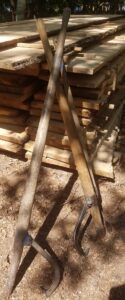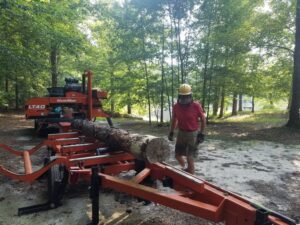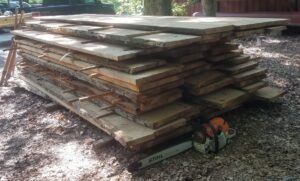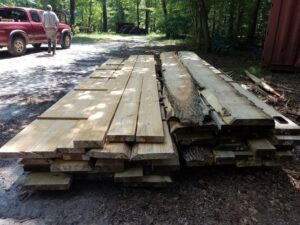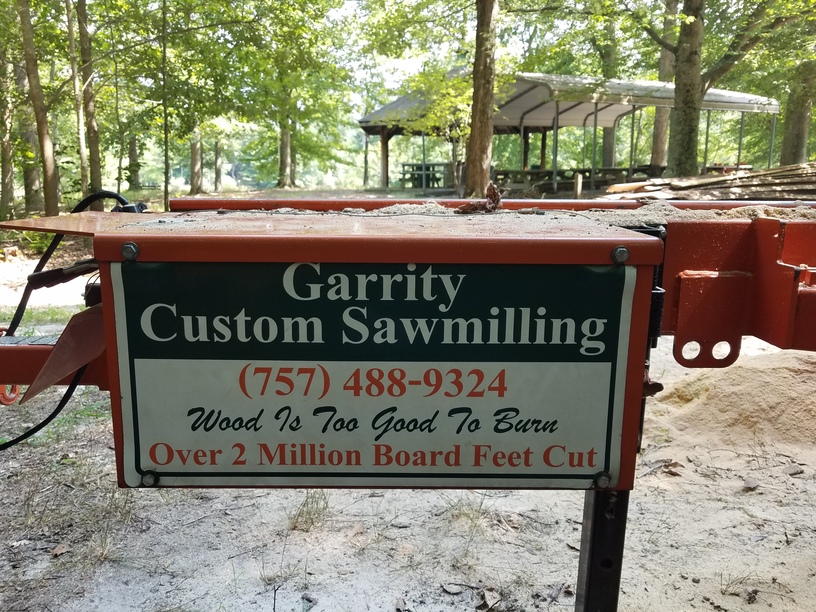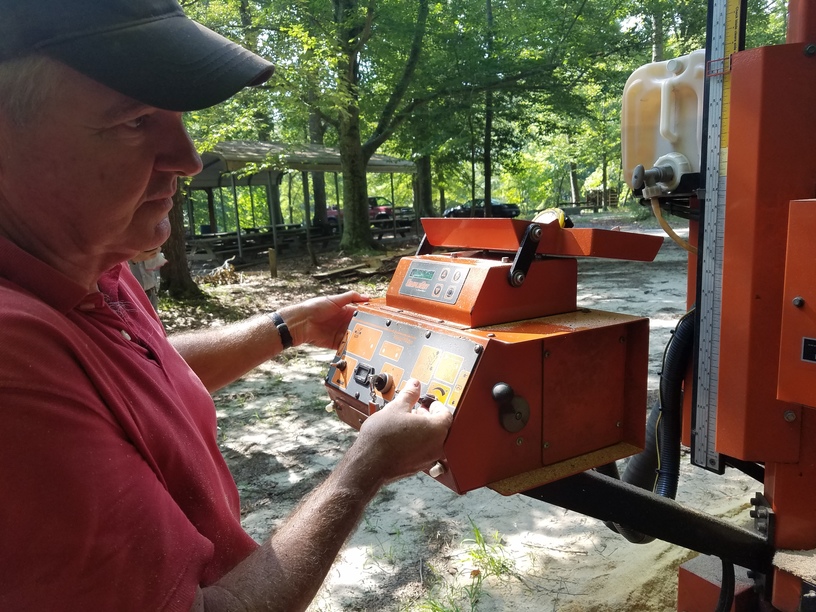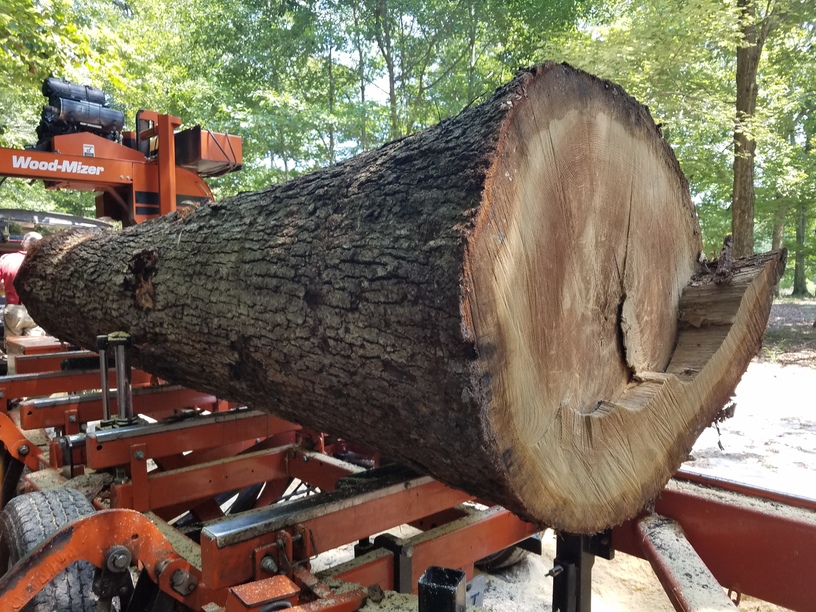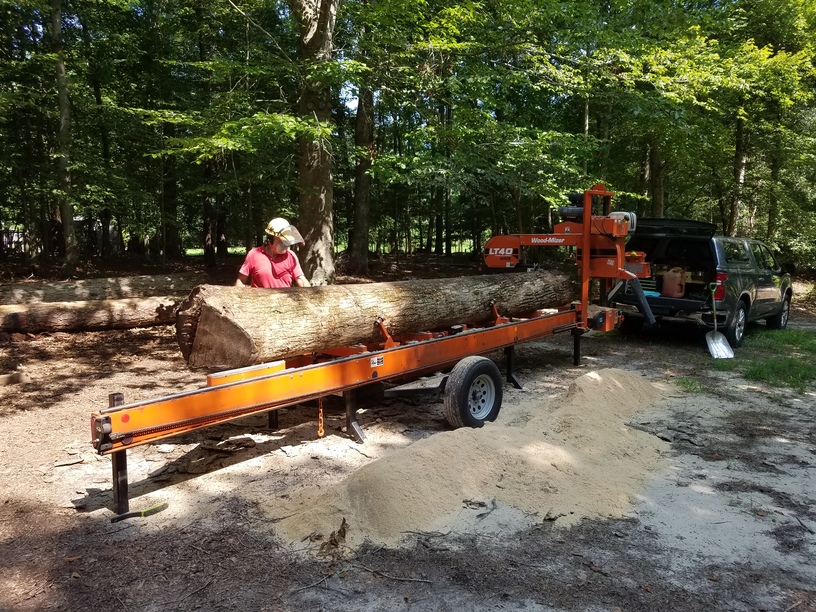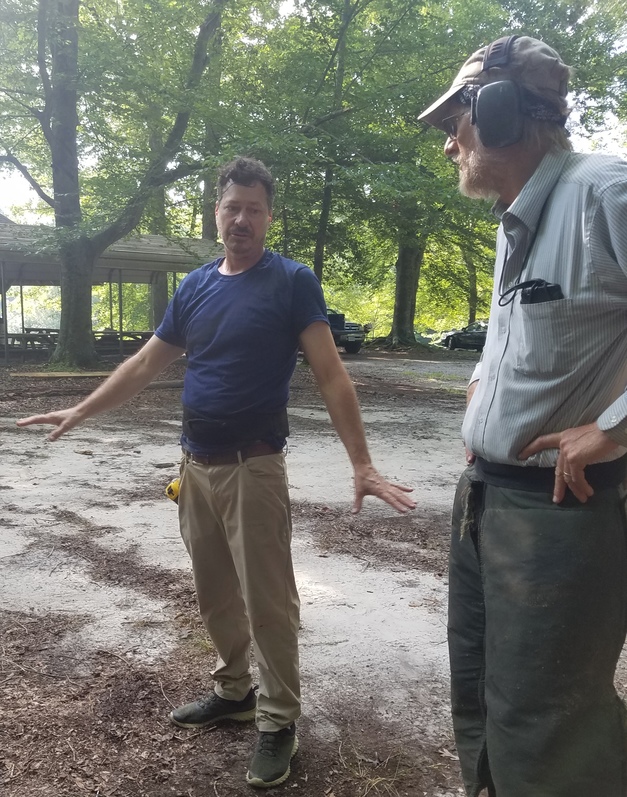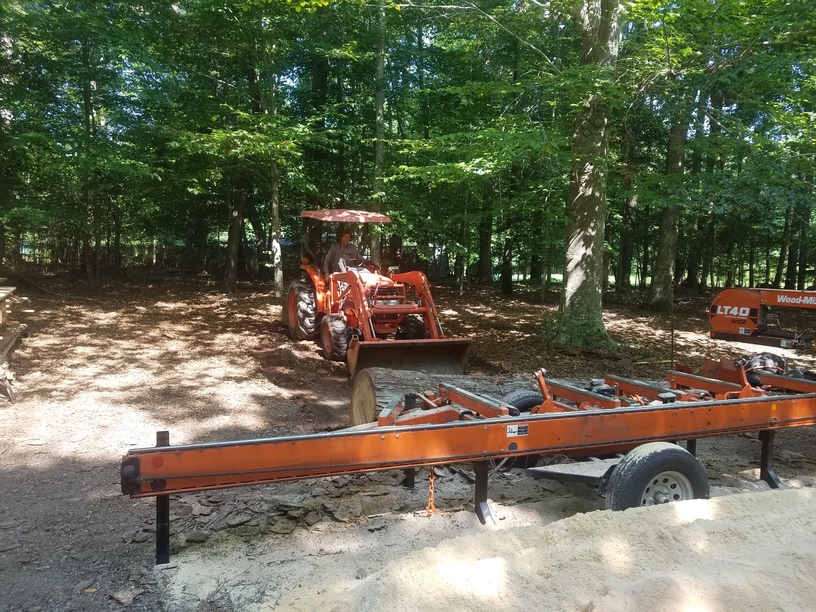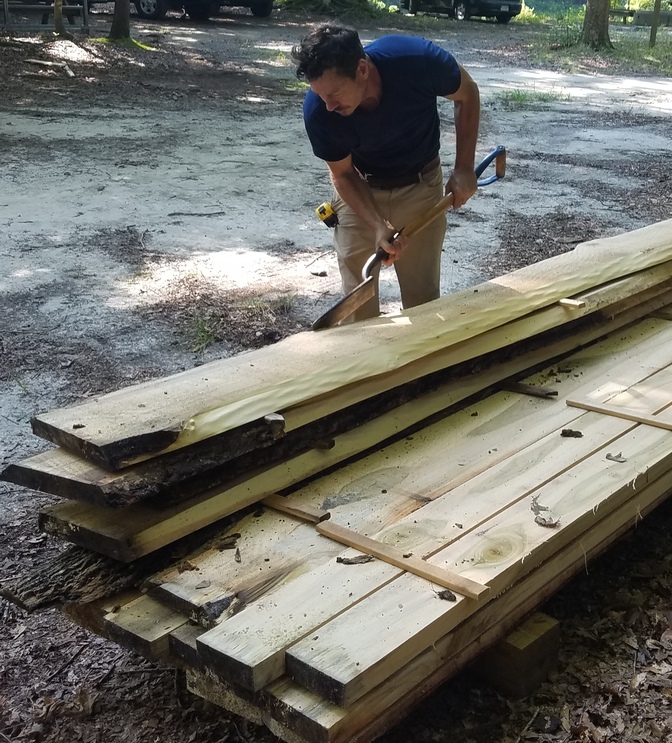Bright and early at 8am on the mornings of August 24th and 25th, chapter board member Mike Lane, and chapter Ike Ray Powell met Paul Garrity at the chapter park to begin milling boards from logs that we had previously cut and removed from our chapter park dam. As we stacked each board after being cut with the band saw, our shirts became soaked with sweat due to the high humidity and soaring temperatures. Several of the boards were over 24″ in width and up to 11 feet long and were very heavy. It was hard work and we got some very much appreciated help for a couple of hours from chapter Ikes Mike Pullen and Zach who pitched in to help stack the boards.
Paul has been milling boards for approximately 30 years. He enlightened us that a sawyer is a person who mills boards. Folks with the last name of Sawyer most likely are descended from folks who worked as sawyers, he said. Also, he mentioned that the tool we used for rolling/moving the logs is called a cant hook. Paul demonstrated the javelin thrust method to grab the log down low.
Paul’s portable milling equipment has a water-cooled bandsaw blade, a 25hp gas motor, and hydraulic cylinders to lift/position the logs. He changed the blade 3 times over the span of two days and demonstrated flipping the ultra-sharp bandsaw blade mid-air to fold it into 3 nestled coils in one smooth motion. For smaller width bands it might require 4 coils, he said. The purpose of coiling them this way for storage is to ensure they never get a dent/bend anywhere in the band because that would cause the blade to wobble when cutting boards. Sharpening blades by hand is a 45 to 50 minute ordeal he noted and that years ago he would sharpen three such blades each night after working all day. Now he sends them out to be sharpened by computer-controlled equipment.
Paul taught us that he looks at both the geometric center of the log as well as the center of the tree’s growth rings when figuring out how to make optimum cuts for producing the best quality boards. Consequently, some logs were turned into 5″x7″ beams but most were turned into boards and slabs that were approximately 2″ thick in varying widths. On our lunch break, Paul and Mike discussed the varieties of trees, tossing around tree genus and species with one another in casual conversation. When asked if pin oaks were considered to be red oak, Paul replied that there are just two kinds of oak: white, and everything else is red, with pin oak being red oak.
Mike, Paul’s customer Clint, and Ray placed pre-cut wooden 1″x1″ spacer slats between the boards when stacking them on top of each other, immediately after they were cut, so that the wood would begin drying immediately. Clint pointed out that these boards would continue to be dry-cured in this manner since kiln drying is just too expensive.
As you can see, Paul milled quite a number of boards! Most of them were poplar, red and white oak, but a couple were pine. Our gum logs were not milled since they twist badly when they dry, Paul explained.
The last milled log of the day was a very large, knobby, white oak log, and Mike came up with idea to split it in half to make benches for placing around our gazebo fire pit. Paul cut it in half and Mike used his tractor bucket and some chains to carry the logs over to the fire pit area to place on cinder blocks for drying. Later, Mike said we can hack out comfortable seats in these logs to make benches.
The boards that were milled exhibited beautiful grain patterns/colorations and will wind up being used for custom woodworking projects, Clint said, such as coffee tables, bar tops, and ceiling beams. We are very thankful to Paul for taking on this milling job for us so that the logs didn’t go to waste.
Here are links to 3 videos posted of the milling equipment in action:
And, below is a gallery of several more photos taken over the two day span:
- Garrity Custom Saw Milling Sign
- Paul at the Milling Controls
- Big White Oak Log
- Milling In Progress
- Curtis and Mike Talking
- Mike Using Tractor
- Curtis Removing Bark

